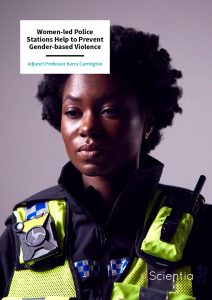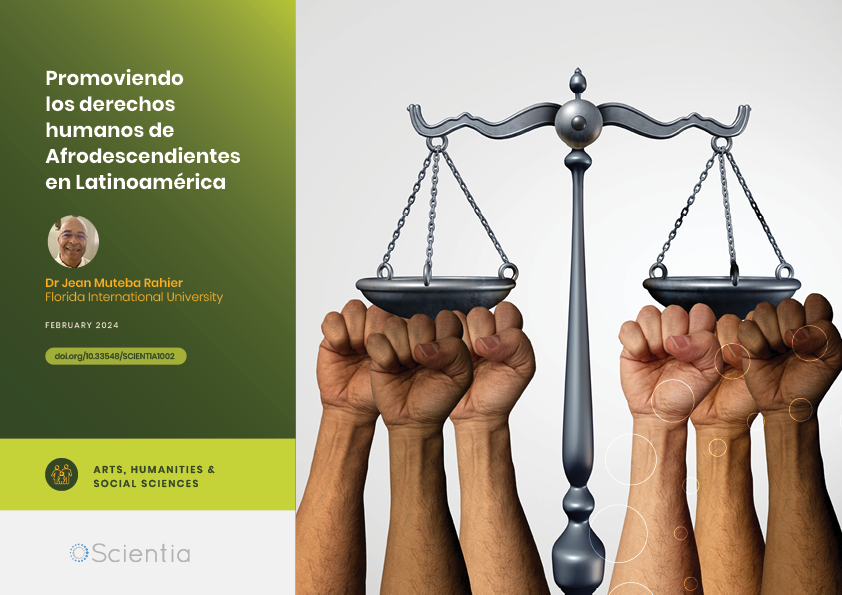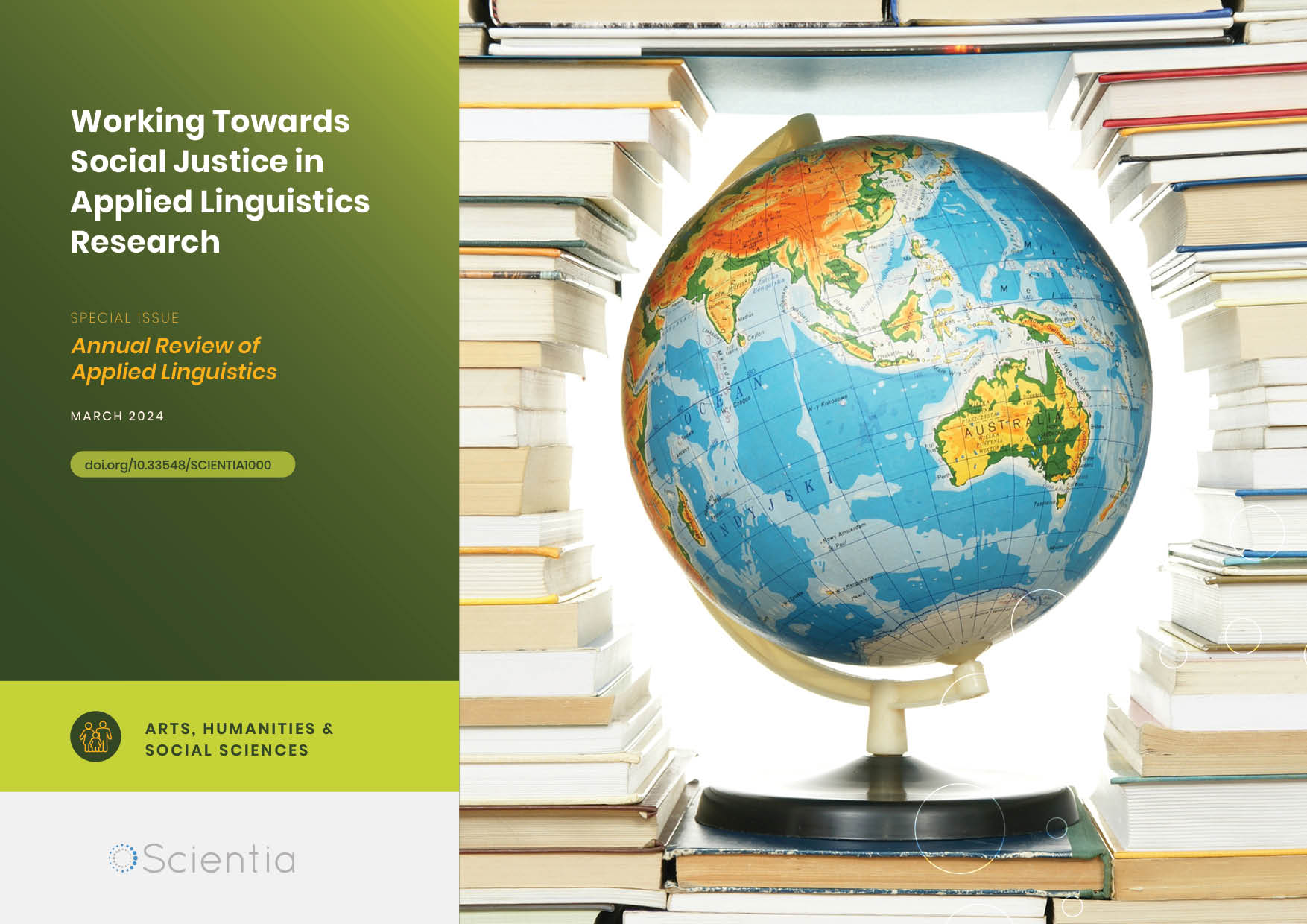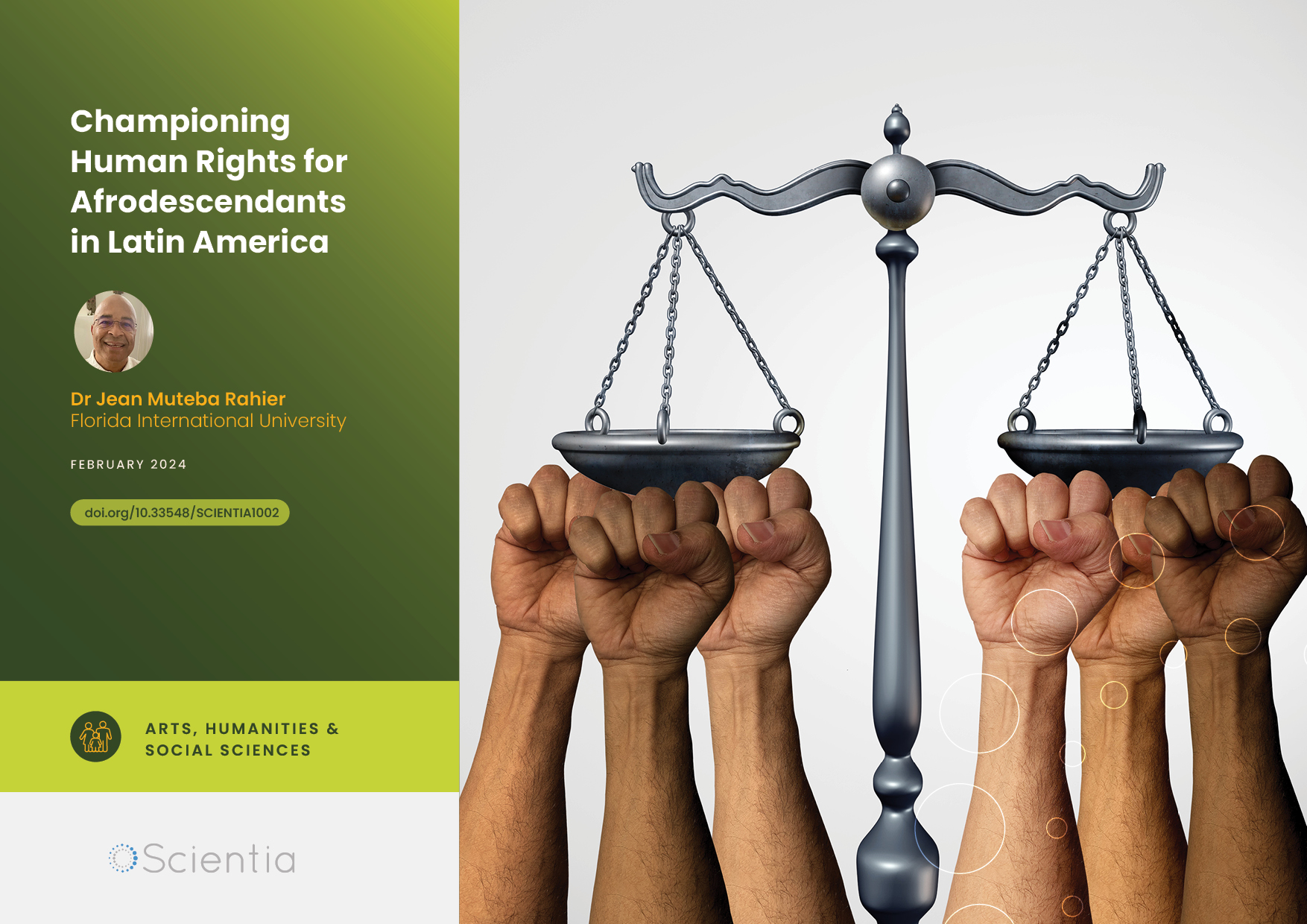Adjunct Professor Kerry Carrington | Women-led Police Stations Help to Prevent Gender-based Violence
To prevent violence against women, a few decades ago countries in Latin America started introducing women-led police stations to respond to incidents of gender violence. Kerry Carrington, an Adjunct Professor of the University of the Sunshine Coast, has conducted extensive studies investigating the impact and advantages of these women’s police stations. She hopes that her work will inspire governments in Australia and the global north to establish women-led stations on a large-scale.
Gender Violence in the 21st Century
Gender-based violence, which describes violence directed at individuals of a specific gender, is among the most pressing human rights issues worldwide. It can include psychological, physical, and sexual violence, as well as stalking, forced marriages, female genital mutilation, forced abortion or sterilisation, sexual harassment, and other forms of abuse.
While people of all genders can experience gender-based violence, most of its victims are adult women and young girls. According to global statistics, approximately 30% of women have been the victim of violence or abuse, whether perpetrated by strangers or by their own partners and family members. In many countries worldwide, widespread forms of gender-based violence, such as stalking or domestic violence, only became illegal in the late 20th century and early 21st century, while in other countries they are still legal.
While countries in the global north now prosecute most types of gender violence, traditional police stations and judicial systems do not always respond effectively to it, as they often operate within male dominated cultures that are ill-equipped to interact with victims and survivors.
Researchers and lawyers worldwide have thus been trying to devise alternative strategies and approaches to address gender-based violence, which could make victims and survivors feel more at ease and ensure that their cases are properly handled. One of these strategies, first implemented in countries across Latin America, involves the introduction of alternative police stations led by women.

The Rise of Women’s Police Stations
In most countries, policing is a male-dominated profession associated with strict ranks and hierarchies, and a pervasive masculine culture, as policing was restricted to men only for much of history. Even when women were permitted to join the police, they were restricted to feminine roles and not treated as equals until relatively recently. In this historical context, women police officers are disadvantaged and encounter many challenges compared to their male colleagues.
This masculine culture can adversely impact how officers respond to violence against women and girls. For instance, surveys show that when reporting acts of domestic violence or other gender-related incidents, many women experienced a lack of empathy from police officers and felt like their complaints were not taken seriously. Some were even blamed for the abuse they had endured.
Professor Kerry Carrington and her collaborators in South America have conducted extensive studies focusing on gender violence and how it could be prevented and tackled more effectively. Some of her recent works specifically explore the impact and advantages of women-led police stations, which specialise in helping female victims of male violence.
The first police stations specialising in violence against women were introduced in São Paulo, Brazil, in 1985. Since then, similar stations have emerged in many countries in the global south, including Argentina, Bolivia, Ecuador, Nicaragua, Peru, Uruguay, India, Sierra Leone, Ghana, Kosovo, Liberia, the Philippines, South Africa, and Uganda.
These alternative police stations are designed to respond to gender violence in a more empathetic and appropriate way, ensuring that victims feel safe to share their experiences and that they are protected from their perpetrators. In the UK, the US, Australia, and other countries in the global North, on the other hand, efforts have so far primarily focused on increasing the percentage of women in law enforcement.
Like conventional stations, women-led police stations employ uniformed, armed officers who work under the authority of the state and respond to emergencies 24 hours a day, all year around. Yet women’s police stations have no holding cells, are colourful and welcoming, and designed to only receive victims and their children. This is the opposite design to typical police stations, which are designed to receive alleged offenders.
Officers working at women’s police stations receive additional, specialised training in how to respond to violence towards women following empathetic protocols informed by a gender perspective. These officers work alongside social workers, lawyers, psychologists and counsellors to ensure that victims reporting a violent crime receive all they guidance, help, and support they need.
This multi-disciplinary team is also in touch with local boards, as well as government, religious, educational, and community-based organisations. While officers at these stations are predominantly female, male officers, social workers, lawyers, and psychologists can also be recruited after they have completed the required training.
Advantages of Women-led Stations
Many studies have investigated the benefits of police stations specialised in gender-based violence, most of which focused on stations in Brazil and India. Professor Carrington and her collaborators specifically explored the impact of women-led stations in Argentina, which carry out both investigative and preventative work.
Argentina currently has two different types of police stations: common police stations (Comisaría) and police stations for women and families (Comisaría de la Mujer y Familia or CMF), the first of which was established in Buenos Aires in 1988. Today, the country has over 120 CMF stations and approximately 15 other units specialising in gender-related violence.
In one of her studies, Professor Carrington and her colleagues investigated how these stations prevent gender-based violence. To do this, they conducted semi-structured interviews with staff working at ten women’s police stations in the Province of Buenos Aires. In addition, they conducted field research and directly observed the officers at work and in the community.
Overall, they found that CMF stations prevented gender violence in three different ways, namely by working with victims and offenders to de-naturalise violence and prevent re-victimisation, by organising community events aimed at disrupting patriarchal norms that sustain gender violence, and by working with local boards to disseminate helpful resources and identify high-risk cases before they escalate into more serious, potentially lethal violence.

Learning from the Global South
The research conducted by Professor Carrington and her collaborators shows how women-led police stations can play a key role in tackling and preventing gender violence on a large-scale.
In addition to examining the work of specific CMF stations in the Province of Buenos Aires, Professor Carrington and her colleagues also compared the multi-disciplinary model they follow to traditional policing approaches. In one of their papers, they concluded that specialised women’s police stations in the global south empower women to free themselves from the suffering and subjugation of domestic violence, while also addressing the patriarchal norms and values perpetuating it.
Professor Carrington’s work is framed by southern criminology, a theoretical approach that reverses the notion that ideas and policies should primarily travel from Western countries to the global south. Her studies suggest that Western countries have a lot to learn from the global south when it comes to preventing and eradicating gender-based violence, starting from the introduction of specialised police stations that are better equipped to deal with these issues.
Women’s Police Stations in Australia
As part of another study, Professor Carrington and her colleagues prepared semi-structured surveys that were handed out to 277 professionals who work, carry out research, and volunteer in the gender violence sector in Australia. These professionals included police officers, NGO representatives, and researchers working at agencies specialising in sexual, domestic, and family violence.
In addition, the team recruited 566 professionals through Facebook advertising and asked them to share their views regarding the possible implementation of women-led police stations in Australia.
The objective of this study was to examine the attitudes of these professionals towards the introduction of gender-specific protocols and specialist police stations like those in Argentina.
Overall, professionals, including police officers, were more enthusiastic about the introduction of gender-specific stations than lay members of the community. Nonetheless, most of the respondents agreed that nine aspects of the Argentinian approach could significantly improve Australia’s response to gender-based violence.
These aspects include the introduction of multi-disciplinary teams, collaboration with local agencies, the provision of emergency support, designing stations that make victims feel welcome, providing childcare, working with communities to prevent violence, offering specifically designed interview rooms for victims, and working with both victims and offenders to break the cycle of violence.

Reshaping Responses to Gender Violence
The research carried out by Professor Carrington and her colleagues summarises some of the key advantages and strengths of women-led police stations. This gender-relevant approach ensures that more victims of gender-based violence have access to justice, are heard, and receive the help, advice and information they need to deal with the abuse they have endured.
In addition to providing victims with the empathy and support they need, these stations allow police officers of all genders to follow a different career path in law enforcement, which is based on a gendered, multi-disciplinary, and more empathetic culturally aware approach. This could potentially encourage more women – especially women of colour – to become police officers, particularly those who would typically be dissuaded by the masculine and colonialist culture associated by traditional police work.
Past studies suggest that women-led police stations can also have substantial effects on the occurrence of gender-based crime. For instance, in metropolitan Brazil, the presence of women’s police stations was found to reduce femicide rates by 50% for women aged between 15 and 24, and reduce the overall rate by 17%.
In the future, the work carried out by Professor Carrington and her colleagues could encourage Australia, the UK, the US and other countries in the global north to introduce similar police stations to specifically address violence against women and girls.
SHARE
DOWNLOAD E-BOOK
REFERENCE
https://doi.org/10.33548/SCIENTIA818
MEET THE RESEARCHER

Adjunct Professor Kerry Carrington
School of Law and Society
University of the Sunshine Coast
Maroochydore, Queensland
Australia
Dr Kerry Carrington is a criminologist and Adjunct Professor at University of the Sunshine Coast in Australia. She holds a PhD in Criminology from Macquarie University and has recently founded her own research consultancy, Carrington Research Consultancy. Before she started at University of the Sunshine Coast, she was the head of Queensland University of Technology’s School of Justice for over a decade. Her research won many international awards, including the 2014 Lifetime Achievement Award from the American Society of Criminology (ASC) and the 2013 Distinguished Scholar Award from the ASC’s Division of Women and Crime. Over the past three decades, Professor Carrington acquired a reputation as one of the world’s leading experts on gender violence and its prevention. She is also an editorial board member of many respected Law and Crime-related journals, including Critical Criminology, Feminist Criminology, Criminology and Criminal Justice, Delito y Sociedad, and the Asian Journal of Criminology, as well as the founder and co-chief editor of the International Journal for Crime, Justice, and Social Democracy from 2012–2022.
CONTACT
E: research@carringtonconsulting.com
W: https://carringtonconsultancy.com/
Orchid: https://orcid.org/0000-0001-6297-2786
Twitter: @CarringtonKL
KEY COLLABORATORS
Professor Máximo Sozzo, Partner Investigator Facultad de Jurídicas y Sociales, Universidad Nacional de Litoral, Santa Fe, Argentina
Natacha Guala, Universidad Nacional del Litoral, Santa Fe, Argentina
Vanessa Ryan, Senior Research Assistant, QUT Centre for Justice, Faculty of Law, QUT, Australia
Dr Jess Rodgers, School of Justice, Queensland University of Technology, Australia
María Victoria Puyol, PhD Student, School of Justice, Queensland University of Technology, Australia
FURTHER READING
K Carrington, R Hogg, and M Sozzo, Southern Criminology, The British Journal of Criminology, 2016, 56, Pages 1–20. DOI: 10.1093/bjc/azv083
K Carrington, J Rodgers, M Sozzo, and MV Puyol, Re-theorizing the progress of women in policing: An alternative perspective from the Global South, Theoretical Criminology, 2022. DOI: 10.1177/13624806221099631
K Carrington, M Sozzo, V Ryan, and J Rodgers, Women-led police stations: reimagining the policing of gender violence in the twenty-first century, Policing and Society, 2021. DOI: 10.1080/10439463.2021.1956925
K Carrington, N Guala, MV Puyol, and M Sozzo, How Women’s Police Stations Empower Women, Widen Access to Justice and Prevent Gender Violence, International Journal for Crime, Justice and Social Democracy, 2020, 9, 42-67. https://doi.org/10.5204/ijcjsd.v9i1.1494
REPUBLISH OUR ARTICLES
We encourage all formats of sharing and republishing of our articles. Whether you want to host on your website, publication or blog, we welcome this. Find out more
Creative Commons Licence (CC BY 4.0)
This work is licensed under a Creative Commons Attribution 4.0 International License. 
What does this mean?
Share: You can copy and redistribute the material in any medium or format
Adapt: You can change, and build upon the material for any purpose, even commercially.
Credit: You must give appropriate credit, provide a link to the license, and indicate if changes were made.
SUBSCRIBE NOW
Follow Us
MORE ARTICLES YOU MAY LIKE
El Dr. Jean Muteba Rahier | Promoviendo los derechos humanos de Afrodescendientes en Latinoamérica
El Dr. Jean Muteba Rahier es un destacado académico, profesor y defensor de los derechos humanos, actualmente afiliado al Departamento de Estudios Globales y Socioculturales de la Universidad Internacional de Florida (FIU). Sus iniciativas, contribuciones académicas y sus proyectos de investigación exploran la aplicación de ‘leyes étnico-raciales’ en la práctica de los sistemas judiciales latinoamericanos para la defensa de los derechos humanos de los afrodescendientes. El Dr. Rahier explica cómo esta indagación amplía los horizontes académicos y busca contribuir a la generación de un conocimiento esencial para contrarrestar y remediar tanto las manifestaciones solapadas y casi imperceptibles del racismo anti-negro en la región, así como sus manifestaciones escandalosamente más visibles.
Annual Review of Applied Linguistics | Working Towards Social Justice in Applied Linguistics Research
The Annual Review of Applied Linguistics recently published an issue dedicated to research by emerging scholars working at the cutting edge of social justice in applied linguistics. Together, the members of the journal’s editorial board developed an exciting new model that would enable the journal to act upon calls in the field to question existing review systems in academic publishing. To this end, the board devised a novel collaborative, iterative review process and actively recruited early-career and emergent minoritised scholars to publish in the issue.
Dr Jean Muteba Rahier | Championing Human Rights for Afrodescendants in Latin America
Dr Jean Muteba Rahier is a distinguished scholar, professor, and human rights advocate. Currently based in the Department of Global & Sociocultural Studies at Florida International University, Dr Rahier’s initiatives, scholarly contributions, and ongoing research projects explore the processes of adoption and application of ‘ethnoracial law’ in the practice of Latin American judicial systems for the defence of Afrodescendants’ human rights. He explains here how this exploration broadens academic horizons and seeks to contribute to the knowledge production necessary to oppose and remedy both the small, almost imperceptible, and the scandalously visible acts of ordinary anti-Black racism in the region.
Professor John Freebairn | Living in Disaster-Prone Areas: The Need for Informed Decision-Making
Exploring the complexities of residing in disaster-prone areas is challenging for individuals, businesses, and governments. Professor John Freebairn of the University of Melbourne is shedding light on this process, and notes that the benefits of living in disaster-prone areas often outweigh the potential risks. As governments intervene with financial incentives, infrastructure development, and regulatory measures, finding an appropriate balance between short-term relief and long-term resilience is crucial. Professor Freebairn considers the roles of government, information, insurance strategies, and subsidy consequences.





